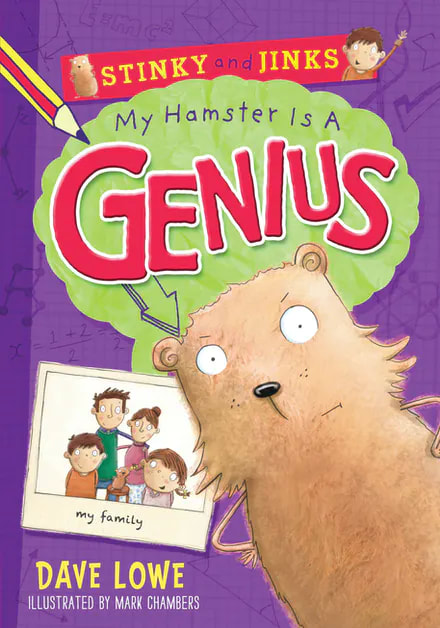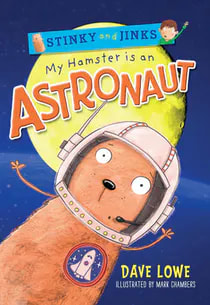
Writing Humour with Dave Lowe
Article by Melissa Salisbury
The Write Links’ professional development session for April was on writing humour and was more than ably presented by Dave Lowe. The online meeting format did nothing to take away from Dave’s sense of humour, which is quick and self-deprecating. The session was both informative and entertaining, and Dave was very generous, sharing his knowledge and experience freely with the Write Links group.
Writing humour
Dave’s number one tip was to read your story aloud because it helps identify whether the wording and punctuation work… or not. His other tips included the following:
Dave’s number one tip was to read your story aloud because it helps identify whether the wording and punctuation work… or not. His other tips included the following:
- Dave advised he writes many drafts, upwards of 100, and the first draft isn’t funny – it’s not until many drafts later that the jokes appear
- Tinkering with the words and layout is very important – try different punctuation and different words because sometimes a comma can be the difference between a joke working or not
- The punchline shouldn’t be in the middle of the sentence – the punchline/funniest part should be at the end of the sentence
- The ‘rule of three’ (discussed below) works well for humour
- Good writer’s trust the reader – you don’t have to hammer the joke home
- Dave advised he aims for at least three jokes per page – when reading his manuscript. He ticks the parts that make him laugh/smile, and then checks whether he has at least three ticks per page
- If possible, finish a chapter on a cliff-hanger or joke, or both
- Mixing humour with serious moments can help to alleviate grim moments
- Dave prefers shorter chapters, and more of them, to keep kids reading
It can be good to humiliate/embarrass your character, and this can be pushed further if there is a fantastical element to the story, such as in his current work-in-progress ‘The Incredible Floating Boy’ (who floats whenever he’s embarrassed) – however, Dave warned that if there is one fantastical element, the reader needs everything else to be real, such as people’s reactions, to keep the story plausible.
 Our first online Write Links meeting!
Our first online Write Links meeting!
Models of funny stories
Dave outlined two models of funny stories:
Dave outlined two models of funny stories:
- One model is where all the characters are normal except for one eccentric character – the Mickey Mouse, Minnie Mouse and Goofy model
- The other model is where all the characters are inherently funny/eccentric/bonkers – the Bugs Bunny model. This is Dave’s preferred model.
Types of humour
Punchline at the end of the sentence
Dave advised that the punchline works best at the end of the sentence and provided the following example. In the first example, the punchline is buried in the middle of the sentence:
Dad meanwhile was frozen in shock and still holding the shoe above his head – like he was The Statue of Liberty but with a size seven trainer instead of a burning torch.
By moving the punchline to the end of the sentence, he increased the humour in the sentence considerably:
…like he was The Statue of Liberty but, instead of a burning torch, he was holding a size seven trainer.
Exaggeration
According to Dave exaggeration can be funny, especially if it’s a child narrating the story, as long as you don’t over-use this type of humour. He provided the following example, which uses the rule of 3 (discussed later), creates strong images and finishes on the funniest comparison:
The sound was spectacular: like a motorbike, crossed with a trombone, crossed with an annoyed duck.
Using one strong image can be equally effective and keeping the exaggerating sentence short lowers the risk of taking the reader out of the story. For example:
Dad was dancing. If you could call it dancing- you could also call it ‘hopping from foot to foot like a demented chicken’.
Punchline at the end of the sentence
Dave advised that the punchline works best at the end of the sentence and provided the following example. In the first example, the punchline is buried in the middle of the sentence:
Dad meanwhile was frozen in shock and still holding the shoe above his head – like he was The Statue of Liberty but with a size seven trainer instead of a burning torch.
By moving the punchline to the end of the sentence, he increased the humour in the sentence considerably:
…like he was The Statue of Liberty but, instead of a burning torch, he was holding a size seven trainer.
Exaggeration
According to Dave exaggeration can be funny, especially if it’s a child narrating the story, as long as you don’t over-use this type of humour. He provided the following example, which uses the rule of 3 (discussed later), creates strong images and finishes on the funniest comparison:
The sound was spectacular: like a motorbike, crossed with a trombone, crossed with an annoyed duck.
Using one strong image can be equally effective and keeping the exaggerating sentence short lowers the risk of taking the reader out of the story. For example:
Dad was dancing. If you could call it dancing- you could also call it ‘hopping from foot to foot like a demented chicken’.
The rule of three
This approach generally uses two normal examples and one unexpected example but can also use three unexpected examples (with the funniest example last). Dave’s examples of the rule of three included:
I’ve been to all the great cities: Paris, Rome, Logan.
Dave then ran two writing exercises to give us all an idea of writing exaggeration/hyperbole and attempting the rule of three, and there were some fantastic efforts from the talented Write Links group.
Thank you, Dave, for a memorable professional development session.
This approach generally uses two normal examples and one unexpected example but can also use three unexpected examples (with the funniest example last). Dave’s examples of the rule of three included:
I’ve been to all the great cities: Paris, Rome, Logan.
Dave then ran two writing exercises to give us all an idea of writing exaggeration/hyperbole and attempting the rule of three, and there were some fantastic efforts from the talented Write Links group.
Thank you, Dave, for a memorable professional development session.
Comments
Sorry, the comment form is closed at this time.









Pym Schaare
Great article 👍. Dave’s enlightening take on the way he uses humour in literature was well positioned for all genres. Even though, Dave uses humour in his picture books, I can see how the use of it in YA lit would benefit. Fabulous structure in his explanation added to my understanding of this field in literature. Super Dave.
Norah Colvin
This was a great session. I really enjoyed it and learned lots from it.